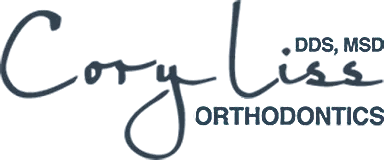
Two Phase Orthodontic Treatment
You may have heard from friends or family that some children have braces, or orthodontic treatment twice. Perhaps your child has told you that a young classmate of theirs has braces on or an expander. This is what we would call a two phase treatment, where a patient undergoes an early intervention phase of treatment when they have mixed dentition (some baby teeth, some adult teeth), followed by a second and final comprehensive phase of treatment when the adult teeth are present. An initial phase of treatment is typically not recommended for cosmetic purposes, however, if your child is experiencing bullying or lack of self-esteem due to their teeth or bite, this is a legitimate reason to discuss early intervention.
The Canadian Association of Orthodontics recommends that your child sees an orthodontist for an assessment between ages 6-8, in order to keep your child’s oral health in check and assess the need for an initial phase of orthodontic treatment. Phase one orthodontic treatment is recommended to correct problems early on to prevent larger problems later. At your initial visit, you may be advised by the orthodontist that your child does not require treatment at that time, or that a problem exists that would benefit from early treatment. By addressing concerns early, the orthodontist can take advantage of the child’s ongoing growth and development and normalize the setting in which the adult teeth will erupt. Early treatment can also help to avoid the need to extract permanent adult teeth later on.
Phase One Interceptive Treatment:
- Begins to target pre-existing bite concerns and helps stop them from becoming more severe with growth
- Addresses existing tooth crowding and misalignment issues
- Can make the second phase of treatment easier and shorter
Some Conditions That May Warrant an Initial Phase of Treatment Include:
- Crossbites (where the upper teeth fit in behind the lower teeth)
- Significant crowding (where there is not enough space for teeth to erupt into their proper position)
- Open Bite (where the upper teeth do not contact the lower teeth on biting)
- Flared upper teeth (where the risk of injury to the permanent teeth is increased)
- Deep overbite (where the upper teeth cover most or all of the lower teeth on biting)
- Underbite (where the lower jaw is positioned ahead of the upper jaw)
- Oral habits (thumb or finger sucking, tongue thrust, mouth breathing, etc.)
Phase Two Treatment
The second phase of treatment would commence after the adult teeth have erupted. The goals of the second phase of treatment can include completing the bite correction and aligning the teeth to their final, beautiful position! These treatments are always followed up by a retainer to maintain the end result.
Both phase one and phase two treatments can include a variety of appliances that can be fixed in place, or removable. The type of appliance recommended depends on the needs of each individual patient
For more advice and tips, ask our expert staff at your next visit to our office!

